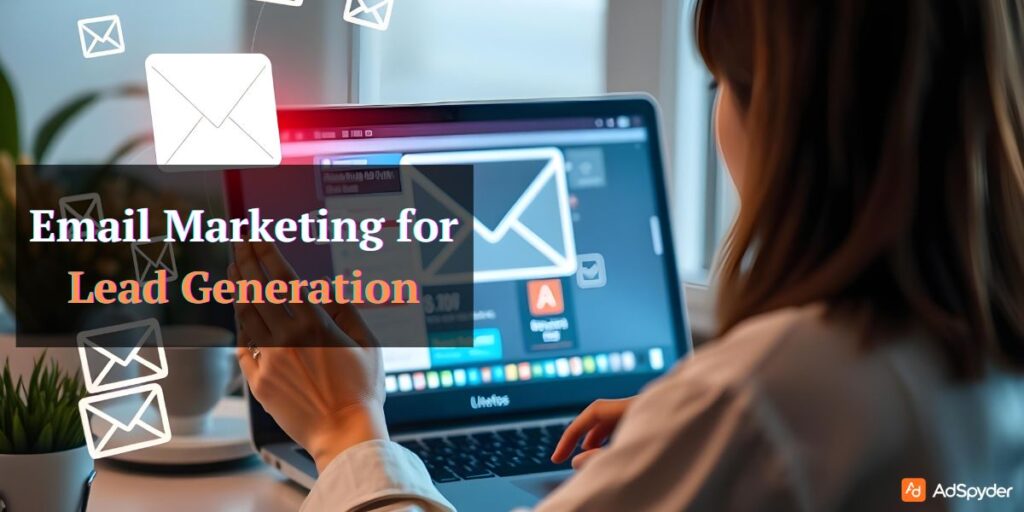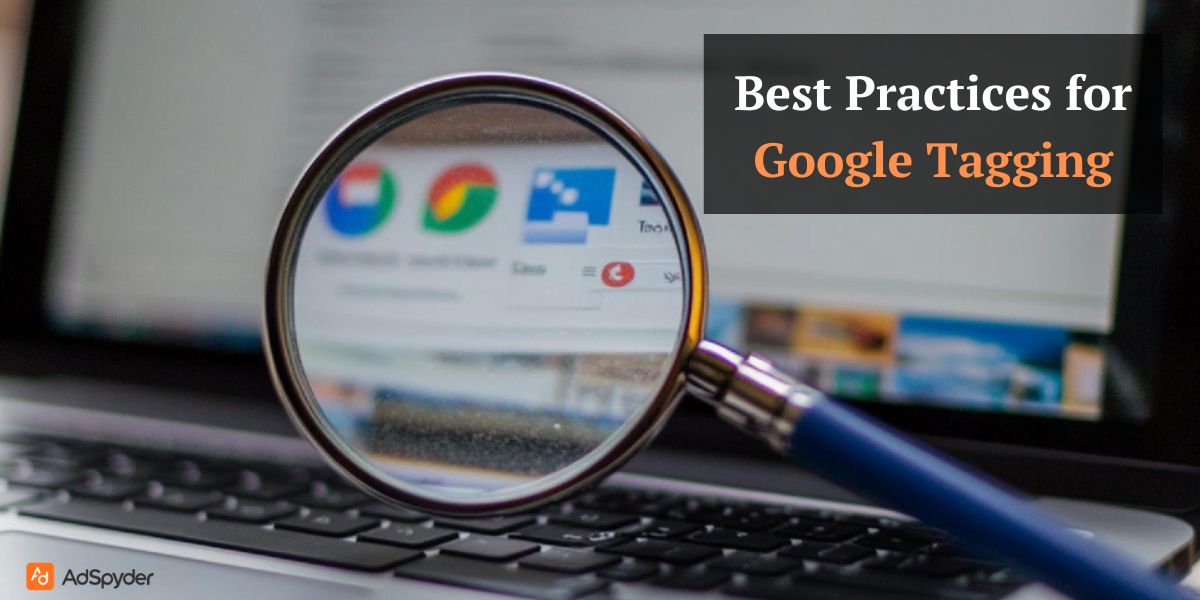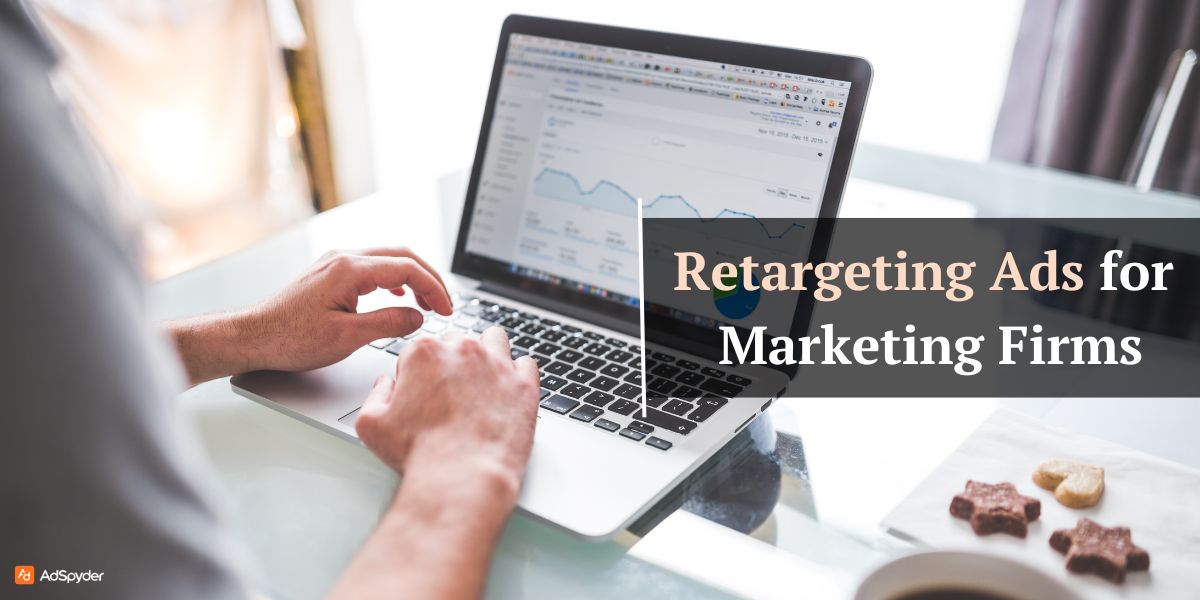Email marketing remains one of the most effective channels for lead generation, allowing businesses to connect directly with potential customers with less investment. This comprehensive guide will help you explore strategies, best practices, and tips for leveraging email marketing to generate and nurture leads in the long run. We will first understand the basics of email marketing from knowing your ideal customers, building a quality email list and then crafting compelling subject lines and content.
Ready to Elevate your Marketing Strategy?
Understanding Your Audience
Before diving into email marketing tactics, it’s crucial to understand who your audience is. A targeted approach ensures that your messages are more related to potential leads, increasing the likelihood of conversion.
Importance of Identifying Target Demographics
Identifying your target demographics involves understanding the characteristics of the people most likely to be interested in your products or services. Consider factors such as:
- Age and Gender: Different demographics respond to various messaging styles. For example, younger audiences may prefer casual and trendy content, while older demographics might appreciate more formal communication with knowledgeable insights.
- Location: Geographic location can influence purchasing behaviour and preferences. Customizing content based on location will enhance relevance and give better results. For example, if you want leads for online shoppers, then targeting urban cities would be recommended.
- Interests and Pain Points: Knowing what problems your audience faces allows you to position your offerings as solutions. Conduct surveys or use analytics tools to gather insights into your audience’s interests and challenges.
Creating Buyer Personas to Tailor Your Messaging
Buyer personas give you a brief understanding of ideal customers based on the data. Creating detailed personas helps you craft personalized email content that speaks directly to your audience’s needs.
- Demographics: This includes the age, gender, income level, education, and job title of the customer.
- Goals and Challenges: Identify what your personas aim to achieve and their paint points or challenges they are facing right now. This will help you tailor your emails accordingly.
- Preferred Communication Channels: Understanding where your audience spends most of their time online, you can then guide your email strategy. For instance, if your target audience is highly active on LinkedIn, you might focus on B2B messaging.
Building a Quality Email List – Email Marketing for Lead Generation
An email list with reliable emails and ideal users who might be interested is essential to maintain. Focus on quality over quantity to ensure that your leads are genuinely interested in your offerings.
Techniques for Growing Your Email List
From lead magnets to social media promotions, there are multiple options available to increase your subscriber base. To help you create your email list, here are a few technique ideas that you can follow
Using Lead Magnets:
- Lead magnets by the name you can understand that the offers or creative ways which can attract users so they are lucrative offers given to potential subscribers in exchange for their email addresses. These can include eBooks, whitepapers, checklists, any beneficial offer or exclusive content.
- For example, a software company might offer a free trial or demo in exchange for contact information, allowing prospects to experience the product firsthand.
Website Sign-Up Forms and Landing Pages:
- Create visually appealing sign-up forms on your website, ensuring they are easy to locate. Use pop-ups or embedded forms on high-traffic pages.
- Dedicated landing pages for specific campaigns can be highly effective. If we promote a particular page that we want the users to know and buy, this will prove to be effective. Focus on a single call to action that encourages visitors to subscribe to our email.
Social Media Promotion:
- Make maximum use of social media and other similar platforms to promote and build your email list. Share enticing posts about the benefits of subscribing, and consider running contests or giveaways to encourage sign-ups.
- Include links to your email sign-up form in your social media bios, posts and stories.
Webinars and Events:
- Hosting webinars to spread awareness or live events can attract leads that you are looking for. Compel users to register with their email addresses to participate. This way, you can not only build your email list with ideal customers but also gain trust and authority in your field.
Maintaining List Hygiene and Ensuring Opt-In Compliance
Once you start building your list, it’s essential to maintain its quality for better results and understanding of your email marketing performance.
- Regularly Clean Your List: Remove clutter like emails that are not responding or are not interested anymore in your emails once in two months. This helps improve your engagement rates and ensures that you are communicating with interested leads.
- Double Opt-In: Implementing a double opt-in process can help ensure that subscribers genuinely want to receive your emails. This means once the subscriber has subscribed to your email, ask them to verify by sending a code; this confirmation ensures that they are genuine and interested users.
- Compliance with Regulations: Familiarize yourself with email marketing regulations, such as GDPR and CAN-SPAM. Ensure that subscribers can easily opt out of communications, and always respect their preferences.
Related: Email Marketing for Real Estate
Crafting Compelling Email Content
Once you have built up your email list, the next step is to design and draft compelling content that drives engagement.
Writing Attention-Grabbing Subject Lines
The subject line is the first thing your subscribers will look at as soon as they open their Gmail, greatly influencing whether they open your email. Make sure to craft out-of-the-box and compelling subject lines.
- Be Concise and Clear: Make the subject line to the point and aim for 6-10 words to ensure readability on mobile devices as well. Your subject line should give a clear idea of what the email contains and should not be longer.
- Use Actionable Language: Encourage recipients to take action. Use phrases that are direct and to the point, like Discover Now, Unlock, Grab Deal, etc., to create a sense of urgency.
- Personalization: As we are aware, personalisation gives better results according to data tailored to the preference of the subscriber as this will be of their interest and thus lead to an increase in open rates. For instance, “John, your exclusive guide to lead generation” feels more personal.
- A/B Testing: Experiment with different subject lines to see which ones perform better. A/B testing allows you to refine your approach based on real data.
Personalizing Email Content for Better Engagement
Personalisation goes beyond just addressing the recipient by name; it involves tailoring content based on their Behaviour and preferences.
- Dynamic Content: Use email marketing software that allows for dynamic content blocks. For example, use images and offers that are usually their preferences based on their previous interaction. This will compel them to try your brand.
- Segmentation: Segment your email list based on criteria, as this will ease choosing particular categories according to their interest. Segmentation can be done based on past purchases, engagement levels, goes or interest. This helps you send emails that are relevant to a specific category of people.
- Relevant Recommendations: If a subscriber has shown interest in a particular product or service, suggest to something similar to it and include such related content in your emails to promote the same. This will make you their go-to brand and increase engagement.
Including Valuable Information
Always market yourself as a valuable resource for recipients by sharing insightful and valuable content; just don’t make your content interesting and add jargon. instead choose knowledgeable things.
- Educational Content: Share tips, how-to guides, or industry insights that address your audience’s pain points or challenges. For example, a digital marketing agency might send an email with tips on improving SEO and knowledgeable insights into how to optimize it for better results.
- Exclusive Offers: Consider giving them exclusive discounts and offers, early access to products, or insider information as a reward for being on your email list. This not only drives engagement but also incentivizes subscriptions.
- Compelling Visuals: Incorporate creative and good-looking compelling visuals to enhance your email and make complex information easier to digest for your subscribers while making it appealing.
Designing Effective Email Campaigns
An effective email design not only grabs attention but also compels the user to take action. The visual and structural elements of your email can significantly impact engagement and conversion rates.
Best Practices for Email Design
While designing an email for marketing and promotions of your brand, various segments need attention and precision while crafting, making good potential of creativity by designing layouts, maintaining brand consistency, etc. Let’s look at a few of the best practices that we can inculcate to get enhanced results:
Layout and Structure:
- Mobile Optimization: With a growing number of users checking emails on mobile devices, ensure your email is responsive. Use a single-column layout for easier navigation on smaller screens.
- Visual Hierarchy: Use headings, bullet points, and short paragraphs to make your email skimmable. Important information should stand out from the rest as this will highlight and grab their attention, guiding readers toward key actions.
Brand Consistency:
- Maintain brand consistency through colours, fonts, and logos. This helps reinforce brand identity and builds trust with your audience for the long term.
- Consider using a consistent template as well as brand color for your emails. This not only streamlines the design process but also creates familiarity for your subscribers.
Clear Calls-to-Action (CTAs):
- Every email should have a clear, single purpose. Use prominent calls to action that are visually distinct—content graphics with bottom-like clickable images should be larger than text links and use action-oriented language, such as “Get Your Free eBook” or “Start Your Free Trial.”
- Place CTAs strategically; consider including one above the fold and another at the end of the email to cater to different reading Behaviours.
A/B Testing to Optimize Email Performance
A/B testing is essential for optimizing and making changes to your email campaigns. By trying various versions of your content, you can better understand which resonates best with your audience.
- Elements to Test: Experiment with various aspects of your emails; try different subject lines, CTAs, images, and even the frequency of sending emails. For example, you might test sending emails at business hours versus during the evening; the better the open rate, the better the time.
- Interpreting Results: Monitor the data and analyse the difference to further determine which version performed best. Work on nurturing conversions for the long term.
- Iterate Based on Insights: Use the results of your tests to inform future campaigns. Continuous testing and iteration can significantly enhance your email marketing effectiveness over time.
Nurturing Leads Through Email Automation
Email automation allows you to create tailored experiences for your leads without the need for constant manual effort. By sending the right message at the right time, you can nurture leads effectively throughout their buyer journey.
Setting Up Automated Email Sequences
Automating email sequences saves time, nurtures leads, and keeps your audience engaged without manual effort. From welcome emails to follow-ups, setting them up strategically can boost conversions. Let’s look at the different types of emails that you can use:
Welcome Series:
- A welcome series is the best way of attracting your initial subscribers. Consider sending a series of emails that introduce your organization, highlight key resources, and set expectations for future communications.
- Use this series to build excitement; for instance, offer a discount code or access to exclusive content.
Follow-Up Emails:
- Follow-up emails after initial interactions, such as downloads or sign-ups, can keep your brand on top of your mind. These emails should frequently share the value that you offer.
- For example, if someone downloads a guide, send a follow-up with additional related resources or a personalised message asking for feedback or, you can say, user experience.
Explore Now – Email Marketing for Events
Using Drip Campaigns to Guide Leads Through the Funnel
Drip campaigns deliver a series of pre-scheduled emails that nurture leads based on their Behaviour or interests over some time. This method keeps potential customers engaged without overwhelming them.
- Behaviour-Based Triggers: Automate emails based on specific actions, such as visiting a website, clicking on a link, or abandoning a cart. For instance, if a lead views a particular product but doesn’t purchase it, send a targeted email highlighting that product along with customer testimonials.
- Content Segmentation: Tailor your drip campaigns based on the behavior and interests expressed by your potential leads. If a lead shows interest in a specific service, segment them into a targeted campaign that provides relevant content and resources.
Importance of Timely and Relevant Content in Automation
Timeliness is critical in nurturing leads. Craft content that aligns well with the user’s stage in his buying journey to target and get conversions:
- Awareness Stage: Provide educational content that addresses their pain points; this will make them aware of their challenges and further help them understand how they can overcome the potential solutions given by you.
- Consideration Stage: Share comparisons, case studies, or testimonials that position your offering as the ideal solution.
- Decision Stage: Offer incentives like free trials or consultations to prompt conversion.
Explore Now – Email Marketing for Affiliates
Analysing and Measuring Success
To determine if your email marketing efforts are successful or need any optimization to enhance their performance, it’s essential to track important metrics and continuously monitor and change your strategy based on the current pace.
Key Metrics to Track for Email Marketing for Lead Generation
Tracking the right metrics is crucial for understanding the effectiveness of your email marketing efforts. From open rates to conversions, these insights help refine strategies and drive the results that you are aiming for. To make you more aware of these key metrics that you should monitor across different types of email campaigns are below:
- Open Rate: Open rates are one of the initial and most important metrics as this tells you if your email’s subject line is efficient enough to compel users to open it or not. A low open rate may indicate issues with subject lines or targeting.
- Click-Through Rate: CTR tells you clarity about the percentage of people who opened a link that was interlined or given in your email content. If your CTR shows higher numbers, that means your content is effective and calls to action are more visible and compelling to the recipients.
- Conversion Rate: Ultimately, conversion rates determine the success of your email campaigns. Track how many leads take the desired action, such as signing up for a demo or making a purchase.
- Bounce Rate: This measures the percentage of emails that were not successfully delivered to recipients’ email boxes or IDs. The reason for this might be incorrect email ids or any other descripency related to emails. High bounce rates can harm your sender’s reputation, so it’s vital to maintain a clean list
- Unsubscribe Rate: While some unsubscribes are inevitable, a high rate may suggest your content is not meeting expectations. Analyse the feedback from unsubscribe surveys to improve future emails.
Tools for Measuring Email Performance
Investing in the right tools as a well-working tool can help you streamline your analytics process:
- Email Marketing Platforms: Most platforms like Mailchimp, HubSpot, and Constant Contact provide built-in analytics that allow you to track key metrics easily.
- Google Analytics: Integrating your email campaigns with Google Analytics can help you monitor how email traffic impacts your website’s performance, providing deeper insights into lead behaviour.
Must See: Successful Drip Email Campaigns
Using Data to Refine Future Campaigns
Once you’ve gathered data, research and analyse it to refine your email marketing strategy by trying out different trends based on the data:
- Analyze Trends: Look for patterns in your data over time. Are there certain times of the month when engagement peaks? Do specific topics resonate more with your audience? This will also enhance your understanding of the trends followed by users according to time and content.
- Adjust Based on Insights: If certain types of content drive higher conversions, prioritise them in your future campaigns. Similarly, if specific segments show lower engagement, consider re-evaluating your approach to those groups.
Staying Compliant and Ethical
As you ramp up your email marketing efforts, it’s crucial to adhere to regulations that govern email communications. Non-compliance can lead to penalties and hamper your brand reputation and name.
Overview of Email Marketing Regulations
Email marketing regulations ensure that businesses follow clean practices that are ethically good to go, respect user privacy, and comply with legal standards like GDPR and CAN-SPAM. Understanding these rules helps maintain trust and avoid penalties. Let us take you through a few important regulations that you need to follow:
GDPR :
- The General Data Protection Regulation applies to organizations handling data from EU citizens. It mandates taking consent for collecting and processing personal data. You will have to provide clear documentation and information on how you are going to use subscribers’ data and also ensure that someone who is not interested can opt out easily.
CAN-SPAM Act:
- This U.S. compliance and regulation requires all marketing emails to include a clear opt-out option, proper and to-the-point header information, and a valid physical postal address. If this is not inculcated and if caught, it can lead to heavy penalties.
Best Practices for Maintaining Compliance
Ensuring compliance while promoting through email marketing is important, as this will help you maintain trust since user data is used, avoid legal issues, and achieve higher engagement. By following the below best practices, businesses can create ethical and effective campaigns:
- Opt-In Mechanisms: Use clear opt-in processes that inform subscribers what they’re signing up for. What can they expect from your emails? Avoid pre-checked boxes, as consent must be explicit.
- Easy Unsubscribe Options: Every email should have a clear and visible unsubscribe link or button. It’s essential to convey through visibly looking signs for users to opt out if they are not interested to maintain trust and avoid spam complaints.
- Regular Audits: Periodically review your email practices to ensure compliance with current regulations and best practices.
FAQs
What is Email Marketing for Lead Generation?
Ans:- Lead generation is a process through which you get potential customers who are interested in your product or brand.
How can I grow my email list effectively?
Ans:- There are various ways through which you can build your email list. Some of them are using lead magnets, creating engaging sign-up forms, and promoting through various platforms where your target audience is, or even through various webinars.
What types of content should I send in my emails?
Ans:- Send informational content that either awares the audience or gives them knowledge regarding trending things, exclusive offers, updates about your business, and personalized recommendations based on subscriber interests.
What are automated email sequences?
Ans:- Based on previous interactions of leads, emails are scheduled and designed to nurture these leads over time. These types of emails are said to be automated email sequences.
How do you measure the success of any email campaign?
Ans:- There are various metrics related to your email campaigns, like open rates indicating your effectiveness of the subject line and time that you have sent the emails to users, click-through rates, and conversion rates, which indicates how efficient your content is. All these metrics, when monitored together, give you a better understanding of how successful your email campaign is.
What are some best practices for email design?
Ans:- Crafting layouts that are desktop as well as mobile friendly, as most of the users prefer mobile for email conversations, maintain brand consistency through consistent brand color and other related data, include clear call to actions and opt out options.
What regulations do you follow for email marketing?
Be aware of GDPR and CAN-SPAM regulations, which require consent for data collection and clear opt-out options in emails.
Conclusion
Email Marketing for Lead Generation is a powerful tool, enabling organizations to engage prospects, nurture long-term relationships, and drive results. By understanding your target audience, geo and preferred demographics, as well as their preferences and interests, building an efficient email list, crafting compelling content, and leveraging automation, you can create effective email campaigns that resonate and connect well with your leads.
As you implement these strategies, remember to analyze your performance continuously and improvise, adjusting your actions based on the data insights. Staying compliant with regulations will not only protect your organization but also foster trust with your audience.
By following these tips and best practices, you can elevate your email marketing efforts and turn leads into loyal customers. Start your email marketing journey by including these full proof strategies and watch yourself grow successfully.




